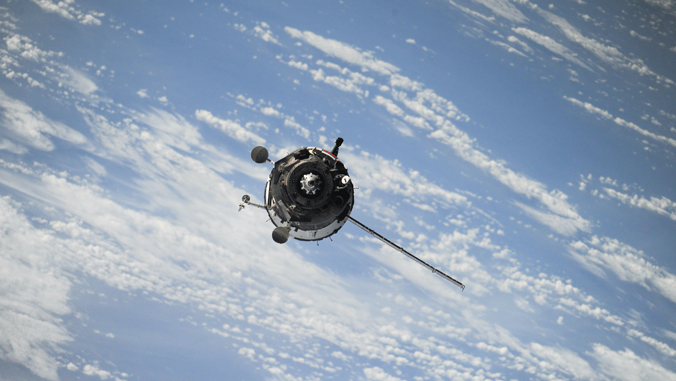
Environmentally-friendly space fuel research gets $550K boost
A key component that powers vehicles in space may eventually become more environmentally-friendly and safer to humans, thanks to research by the University of Hawaiʻi at Mānoa.
Hypergolic bipropellants are combinations of a fuel and an oxidizer that spontaneously ignite upon contact with each other. Compared to non-hypergolic fuels, hypergolic bipropellants do not require an external ignition source, therefore reducing the design and mass of the engine. These characteristics make hypergolic bipropellants important fuel alternatives in space vehicles such as satellites and rockets.
The project by Department of Chemistry Assistant Professor Rui Sun, Professor Ralf I. Kaiser and their research teams, which will investigate the properties of hypergolic bipropellants, received a three-year, $550,000 grant from the Air Force Office of Scientific Research.
Traditional hypergolic bipropellants are created using fuel and an oxidizer that may pose major chemical hazards (highly toxic and carcinogenic) and environmental concerns (very high vapor pressure, which forms a toxic and corrosive cloud if released from its container due to leakage or spill). The safety precautions involved in the handling of traditional hypergolic bipropellants usually send costs soaring, making environmentally friendly and high-performance hypergolic bipropellants greatly desired.
“The objectives of this proposal are to provide new knowledge on the fundamental reaction mechanisms and kinetics involved in the mechanisms of the ignition and reaction of prototype cyano-borohydride hypergolic ionic liquids (HIL) in the presence of key oxidizers,” Sun said. “These findings are essential to the design of next-generation, high-performance, low-environmental hazard, HIL-based chemical propulsion systems through pioneering, fundamental research.”
Sun’s research group will conduct the computational portion of the research and Kaiser’s research group will focus on the experimental part exploiting a newly developed methodology to merge levitated droplets. Additional computational support is provided by a supercomputer called Mana—a free resource for UH system faculty, staff and students—provided by UH’s Information Technology Services. The project gets underway on August 15.
This work is an example of UH Mānoa’s goal of Excellence in Research: Advancing the Research and Creative Work Enterprise (PDF), one of four goals identified in the 2015–25 Strategic Plan (PDF), updated in December 2020.
